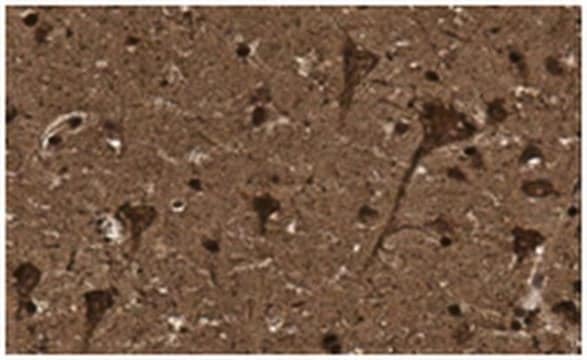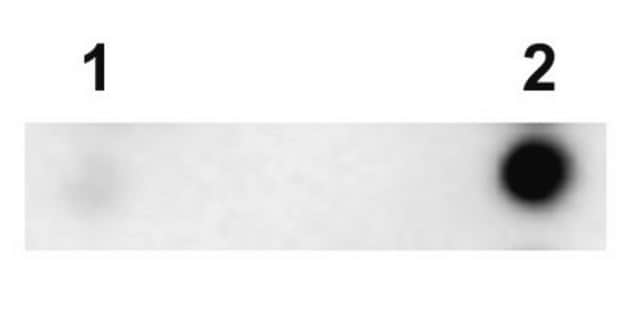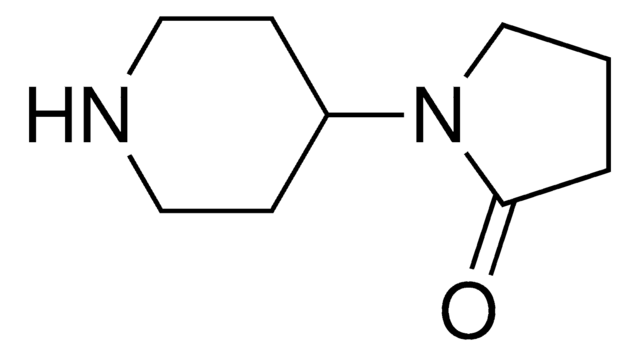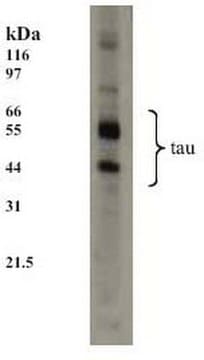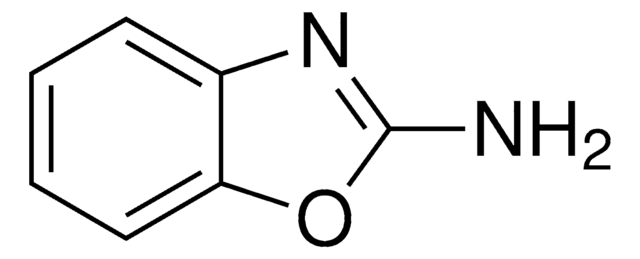MABN2406
ANTI-TAU (MAPT) Antibody
mouse monoclonal, TNT-2
Sinonimo/i:
EC:4.6.1.2, Guanylate cyclase 2D, retinal, Guanylate cyclase E (GC-E), Microtubule-associated protein tau, Neurofibrillary tangle protein, Paired helical filament-tau, PHF-tau, RETGC-1, ROS-GC, Retinal guanylyl cyclase 1, Rod outer segment membrane guanylate cyclase
About This Item
Prodotti consigliati
Nome del prodotto
Anti-Tau Antibody, clone TNT-2, clone TNT-2, from mouse
Origine biologica
mouse
Livello qualitativo
Forma dell’anticorpo
purified immunoglobulin
Tipo di anticorpo
primary antibodies
Clone
TNT-2, monoclonal
PM
calculated mol wt 120.37 kDa
observed mol wt ~N/A kDa
Purificato mediante
using protein G
Reattività contro le specie
rat, human, mouse
Confezionamento
antibody small pack of 100
tecniche
ELISA: suitable
immunofluorescence: suitable
immunohistochemistry: suitable
western blot: suitable
Isotipo
IgG1κ
Sequenza dell’epitopo
C-terminal
N° accesso NCBI
N° accesso UniProt
Condizioni di spedizione
ambient
Temperatura di conservazione
2-8°C
modifica post-traduzionali bersaglio
unmodified
Informazioni sul gene
human ... MAPT(4137)
mouse ... Mapt(17762)
rat ... Mapt(29477)
Descrizione generale
Specificità
Immunogeno
Applicazioni
Evaluated by Immunohistochemistry in mouse retina tissue section
Immunohistochemistry (Paraffin) Analysis (IHC): A 1:50 dilution from a representative lot detected Guanylate cyclase 1 in mouse retina tissue sections.
Tested Applications
Immunofluorescence Analysis: A representative lot detected Guanylate cyclase 1 in Immunofluorescence application (Ying, G., et al. (2018). J Biol Chem. 293(45):17546-17558).
Immunohistochemistry Analysis: A representative lot detected Guanylate cyclase 1 in Immunohistochemistry application (Haire, S.E., et al. (2006). Invest Ophthalmol Vis Sci. 47(9):3745-53).
Western Blotting Analysis: A representative lot detected Guanylate cyclase 1 in Western Blotting application (Haire, S.E., et al. (2006). Invest Ophthalmol Vis Sci. 47(9):3745-53).
Note: Actual optimal working dilutions must be determined by end user as specimens, and experimental conditions may vary with the end user.
Qualità
Western Blotting Analysis: 0.02 µg/mL of this antibody detected Tau in 10 µg of rat entorhinal cortex lysate.
Descrizione del bersaglio
Stato fisico
Ricostituzione
Stoccaggio e stabilità
Altre note
Esclusione di responsabilità
Non trovi il prodotto giusto?
Prova il nostro Motore di ricerca dei prodotti.
Codice della classe di stoccaggio
12 - Non Combustible Liquids
Classe di pericolosità dell'acqua (WGK)
WGK 1
Certificati d'analisi (COA)
Cerca il Certificati d'analisi (COA) digitando il numero di lotto/batch corrispondente. I numeri di lotto o di batch sono stampati sull'etichetta dei prodotti dopo la parola ‘Lotto’ o ‘Batch’.
Possiedi già questo prodotto?
I documenti relativi ai prodotti acquistati recentemente sono disponibili nell’Archivio dei documenti.
Filtri attivi
Il team dei nostri ricercatori vanta grande esperienza in tutte le aree della ricerca quali Life Science, scienza dei materiali, sintesi chimica, cromatografia, discipline analitiche, ecc..
Contatta l'Assistenza Tecnica.
